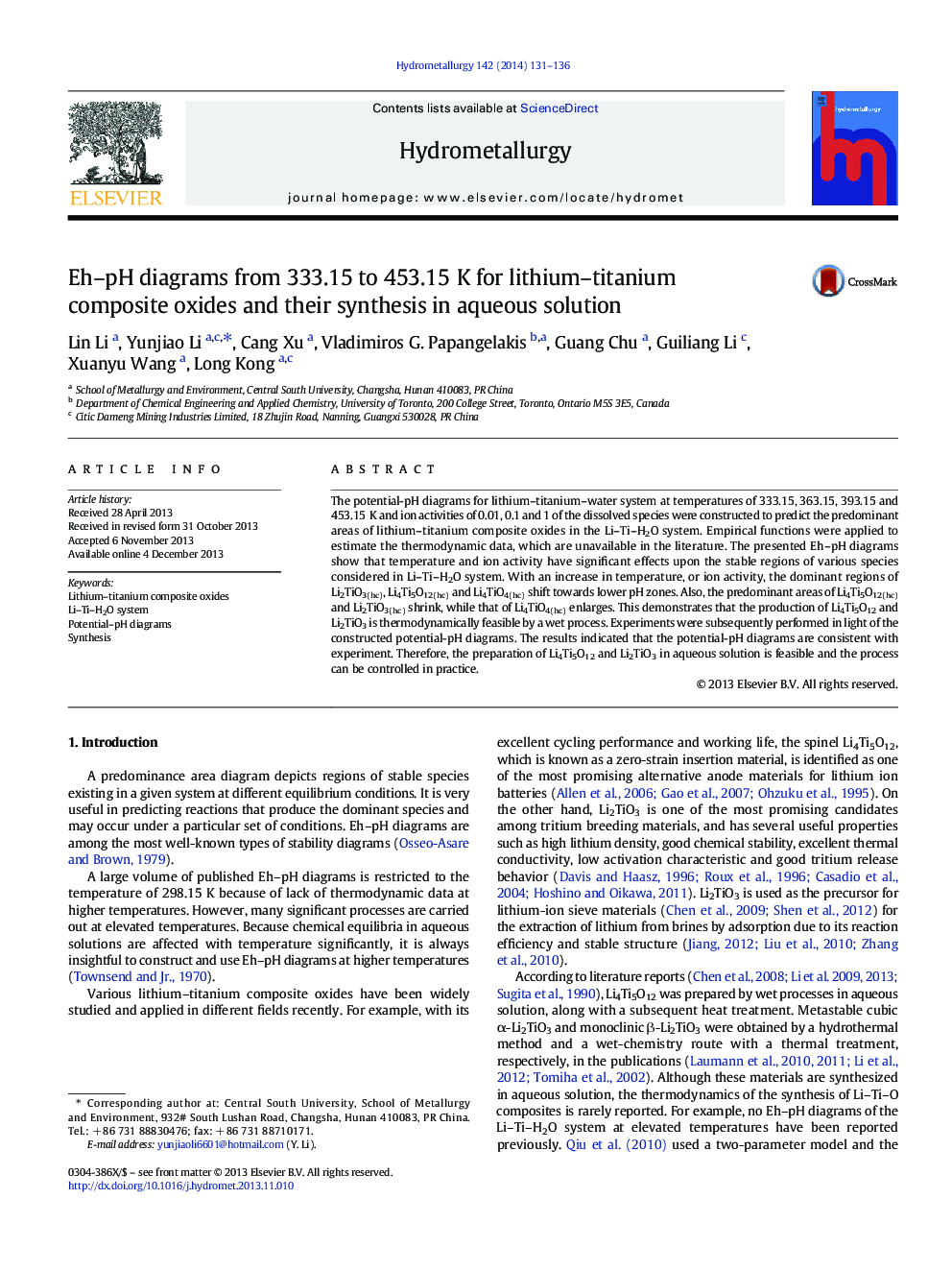| کد مقاله | کد نشریه | سال انتشار | مقاله انگلیسی | نسخه تمام متن |
|---|---|---|---|---|
| 212231 | 462037 | 2014 | 6 صفحه PDF | دانلود رایگان |

• A set of entropies of species considered in Li-Ti-H2O system were estimated.
• The Eh-pH diagrams for Li-Ti-H2O system were constructed at elevated temperatures.
• The predominant areas of Li4Ti5O12(hc) and Li2TiO3(hc) exist in the diagrams.
• Experiments indicated that the constructed Eh-pH diagrams were believable.
The potential-pH diagrams for lithium–titanium–water system at temperatures of 333.15, 363.15, 393.15 and 453.15 K and ion activities of 0.01, 0.1 and 1 of the dissolved species were constructed to predict the predominant areas of lithium–titanium composite oxides in the Li–Ti–H2O system. Empirical functions were applied to estimate the thermodynamic data, which are unavailable in the literature. The presented Eh–pH diagrams show that temperature and ion activity have significant effects upon the stable regions of various species considered in Li–Ti–H2O system. With an increase in temperature, or ion activity, the dominant regions of Li2TiO3(hc), Li4Ti5O12(hc) and Li4TiO4(hc) shift towards lower pH zones. Also, the predominant areas of Li4Ti5O12(hc) and Li2TiO3(hc) shrink, while that of Li4TiO4(hc) enlarges. This demonstrates that the production of Li4Ti5O12 and Li2TiO3 is thermodynamically feasible by a wet process. Experiments were subsequently performed in light of the constructed potential-pH diagrams. The results indicated that the potential-pH diagrams are consistent with experiment. Therefore, the preparation of Li4Ti5O12 and Li2TiO3 in aqueous solution is feasible and the process can be controlled in practice.
Journal: Hydrometallurgy - Volume 142, February 2014, Pages 131–136